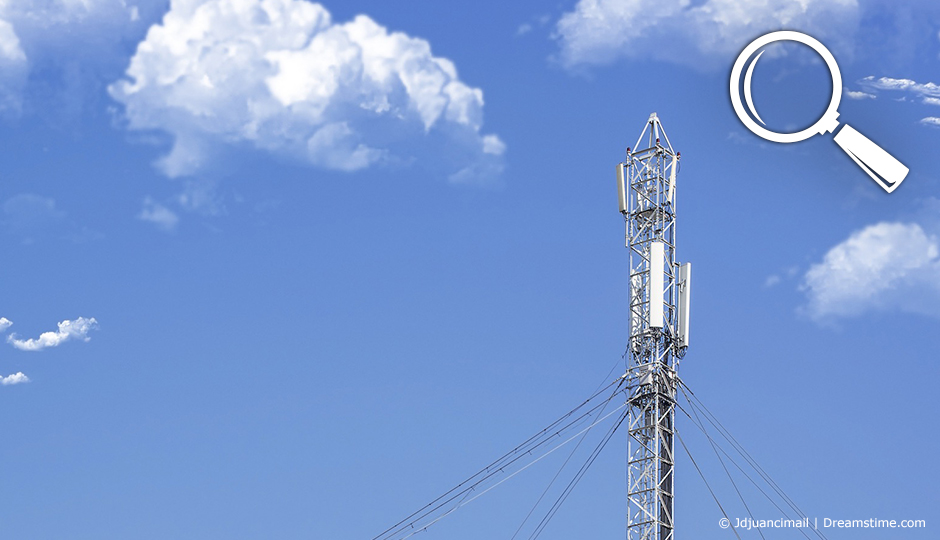Auteur : Agence Science Presse - Stéphane Desjardins
The deployment of 5G doesn’t weaken the immune system. That means it didn’t contribute to the COVID-19 outbreak. So you can disregard some very popular conspiracy theories.
Where did the rumours originate?
Many bizarre theories have spread about the origin of COVID-19 in the past few months. Some of these notions concern the rollout of fifth generation cell phone technology (commonly known as 5G). Hundreds of thousands of Facebook, YouTube and Instagram messages passed on these theories. January 26 saw a peak in “coronavirus” and “5G” key word searches. This was at the same time the first American COVID-19 cases were reported.
Dr. Thomas Cowan quickly emerged as a major promoter of these theories. He describes himself as an anthroposophist — an obscure philosophy sometimes described as a “cult”. The video he posted was shared 16,000 times and obtained 390,000 views in the first week. The same Dr. Cowan faced disciplinary action in California. The complaint accused him of prescribing an anti-cancer drug that hadn’t been approved by the authorities.
Some celebrities have also spread these theories. They include actors Woody Harrelson, John Cusack and Roseanne Barr, singers Keri Hilson and M.I.A., and boxer Amir Khan. More recently, several cell phone towers were burned in the United Kingdom. Following this, Belgium temporarily suspended deployment of 5G.
In some variants of these theories, Cowan and others defend the idea that 5G weakens the immune system, making infection easier.
A long-standing controversy
Like all radio waves, cell phone waves are “non-ionizing”. This is a category defined by physicists. It means they aren’t powerful enough to damage molecules in the human body, such as DNA. So they won’t disrupt functions like the immune system. These low-frequency waves also include visible light, microwaves and all the electromagnetic waves transmitted by household appliances – from the fridge to the computer.
“Ionizing” waves include ultraviolet light, X-rays and gamma rays. Unlike non-ionizing waves, they can break the bonds between molecules and cause cancer. However, a question still persists about the possible effects of prolonged exposure to non-ionizing waves. Could they have effects on the metabolism of simple systems, such as chicken embryos and nerve cell cultures? Québec’s Institut national de santé publique conducted a study. It found that no harmful effects of cellular, radio or wi-fi waves have been proved up to now.
5G uses higher frequency waves than the previous generations of cell phone systems. These “millimetric waves” are also non-ionizing. They don’t travel very far, so they require a great many antennas. This fuels the fears of overexposure, leading to conspiracy theories.
But some scientists are worried about 5G. A literature review published by Italian researchers in 2018 exposes the lack of progress of research concerning this technology. Many of the studies surveyed (published between 2011 and January 2018) focused on two areas. First, the supposed cancer risks caused by nearby exposure (such as a phone). Second, the neurological or metabolic effects (such as cholesterol and glucose levels). Most of these animal or human studies don’t seem to have included the immune system on their radar screens.
On the other hand, other studies report that 5G waves have no effect on human physiology. One of these studies was produced by the International Commission on Non-Ionizing Radiation Protection. It was published in Health Physics in 1998. This work established exposure standards. The safe level is 300 GHz, while 5G involves only tens of GHz, the British fact-checker Full Fact reminds us.
Electromagnetic radiation levels linked to 5G are 66 times lower than the safety standards ordered by OFCOM, Full Fact adds. OFCOM is the British telecommunications industry regulator.
A variant of the theory linking 5G to the coronavirus makes an additional claim: that previous epidemics were also caused by new communications technologies. It claims that introduction of commercial radio triggered the Spanish flu epidemic. The same theory blames the SARS epidemic on 3G, introduced in 2003. It connects swine flu to the introduction of 4G in 2009.
There’s a big problem with this theory. The Spanish flu became an epidemic in 1918. But the world’s first commercial radio station, XWA, had its first broadcast in 1920 in Montréal. (XWA was the ancestor of CFCF, later CINW 940 AM, which stopped broadcasting in 2010). In addition, the first cases of Spanish flu were reported in 1916 and 1917, in France and Kansas.
The deployment of 5G networks around the world doesn’t match the countries where COVID-19 has spread the most. Several severely infected countries, such as France or Iran, don’t have 5G coverage. And even though the pandemic started in China, South Korea was the first country to deploy its 5G network.





